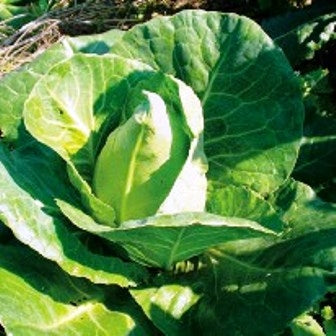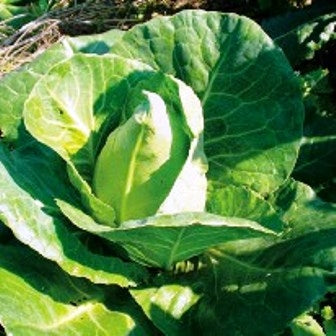CHATEAURENARD WHITE CABBAGE - ko87
Have a question?

CHATEAURENARD WHITE CABBAGE - ko87
Dettagli
Scientific name : Brassica oleracea var. Savoy L
Family : Brassicaceae
Brief history and botanical notes on the plant
Savoy cabbage (Brassica oleracea var. Sabauda) belongs to the Cruciferae family – Brassicaceae, tribe: Brassiceae –. Species: Brassica oleracea L. var. Sabauda is similar to hood cabbage, but unlike it it has wrinkled, wrinkled leaves with prominent veins.
It is a plant of very ancient origins cultivated above all in the central-northern regions of Italy, particularly widespread in the Canavese area.
It is a biennial plant with a not very deep tap root, an erect stem rarely exceeding 30 centimeters in length, large, blistered or gibbous leaves along the edges, the external ones facing outwards and the internal ones gathered into a ball but less closely imbricated than those of cabbage.
The edible part is made up of a rosette of leaves, the external ones face outwards, the internal ones wrap around and overlap, forming a large, tight, fairly consistent globular cap. The ball, green or red-purple, is not very compact. The ribs are numerous and thin; the central one is very pronounced and white in colour.
If left to develop, the plant grows up to 1.5 meters in height, forming abundant ramifications with flowering twigs. The flowers are yellow and, after fertilization, generally crossed and entomophilous, give rise to the formation of a siliqua bearing numerous round seeds, of a bluish black colour.
Savoy cabbage
Needs
It adapts well to all types of soil, as long as they are deep, well aerated and fresh, well endowed with organic substance and with a pH around neutrality. It prefers temperate-cold and humid climates, tolerates cold, but not frost. Stops growth at temperatures below 5°C. It has excellent resistance to frost: it resists temperatures of -10°C and can therefore be stored in the field during the winter.
It is an intercrop crop and leaves good residual fertility both due to the considerable mass of crop residues and the type of cultivation operations required.
Sowing and transplanting times
Seedlings grown in the nursery in honeycomb containers are used (sowing between May and June) and subsequently transplanted from July to August. Excellent rotation with legumes.
Depending on the size of the balls at harvest, there are different planting densities: the distances vary from 60 to 70 cm between the rows and 30-60 cm along the rows. Increasing the density results in smaller balls and greater total yields.
Processing
They require deep tillage of the soil to facilitate the development of the root system.
Fertilization
The crop benefits considerably from organic fertilization. Cabbage is a medium-demanding species in terms of nutritional elements (particular importance is given to calcium and sulphur).
Products
Whole heads are marketed and are suitable for refrigerated storage.
In the kitchen it is used after cooking and for the preparation of soups and stews.
Cultural care
Control of wild herbs can be achieved with weeding, mulching and localized irrigation as well as correct crop rotation.
It is important to eliminate crop residues at the end of the cycle.
Irrigation
The crop requires irrigation upon transplanting and in the initial growth phase. Excess water (and nitrogen) when the head swells can cause it to split.
Adversity
Among the fungal diseases we remember Alternariosis (Alternaria brassicae), Cruciferous hernia (Plasmodiophora brassicae), basal rot (Sclerotinia spp., Rhizoctonia solani, Phoma lingam), powdery mildew (caused by Erysiphe cruciferarum) and downy mildew (Peronospora brassicae, Peronospora parasitica). Also susceptible to some bacteria (Xanthomonas campestris, Erwinia carotovora).
The most important animal parasites are aphids (Myzus persicae, Brevicoryne brassicae), noctules, cabbage flies (Mamestra brassicae, Mamestra oleracea, Pieris brassicae), wire weevils (Agriotes spp.), altica (Phyllotreta spp.), weevils (Baris spp., Ceuthorrhyncus spp.) and the cabbage fly (Delia radicum).
Defense products
Downy mildew can be prevented by spraying with horsetail decoction.
Hernia of cruciferous plants and numerous basal rots and bacteriosis are strongly limited by correct rotations (avoid the cultivation of any cruciferous plant for 3-4 years on the same plot), by the distribution of lithotamnium on the soil before transplanting and by spraying with horsetail decoction .
Bacillus thuringiensis and neem oil can be used to control night moths and cabbage flies.
Altica can be a serious problem especially in the case of compact and dry soil; it can be contained in small vegetable gardens with broom branches and by dusting the vegetation with lithotamnium and bentonite. In case of strong attacks, use pyrethrum.
The control of the cabbage fly is above all preventive and essentially consists in the destruction of vegetation residues, possibly also removing the surrounding earth. Intra-sowing, for example with clover, hinders oviposition.
Production and collection
Approximately 5kg of cabbage per square meter is produced. The harvest is gradual and begins approximately 100 days after transplanting, choosing compact and firm heads.
The first frosts give better quality characteristics.
They can be kept in the open field if the temperature does not fall below -10°C.
Nutritional values
Savoy cabbage is very rich in vitamin A, vitamin C, vitamin K (important for blood clotting) and mineral elements such as potassium, phosphorus, iron, calcium, sulfur (also responsible for the characteristic odor perceptible during cooking). It brings on average 30 Kcal per 100 g of product. The healing properties of savoy cabbage have been known since ancient times. Recent studies have shown that savoy cabbage, thanks to its organoleptic properties and the presence of some substances called indoles, is to be considered protective against some tumors, especially those of the digestive and urinary tract. The decoction of savoy cabbage leaves seems to help fight bronchitis and asthma as well as diseases of the gastrodigestive system. The cooking water is rich in sulfur and is used to treat eczema and inflammation. Savoy cabbage juice is also very useful for fighting constipation.
Family and variety
The leaves in the different cultivars take on chromatic shades ranging from green to purplish red.
Includes summer, autumn and winter varieties. Of the former we remember the Primaticcio di S.Giovanni, the Verzottoshort precocious and the Padovano; of the autumn ones, the Verzotto d'Asti, of Milan, of Naples and Vittoria; of the winter ones, the Comune d'Inverno, the Pontoise, Trionfo d'Inverno, Re d'Inverno, Vertus and the Piacentino.
Biodynamics
In addition to the spraying of spray preparations at the plant and in production, the supply of well-composted organic substance via biodynamic heap allows you to limit imbalances in growth and the consequent attacks of parasites and to allow the heads to develop well.
It is advisable to weed the propagation material with earth mixed with cornoletame 500 or with diluted biodynamic log paste or simply with a clayey mixture.
Use of the biodynamic calendar
To preserve quality and shelf life, harvest the leaves on days.


